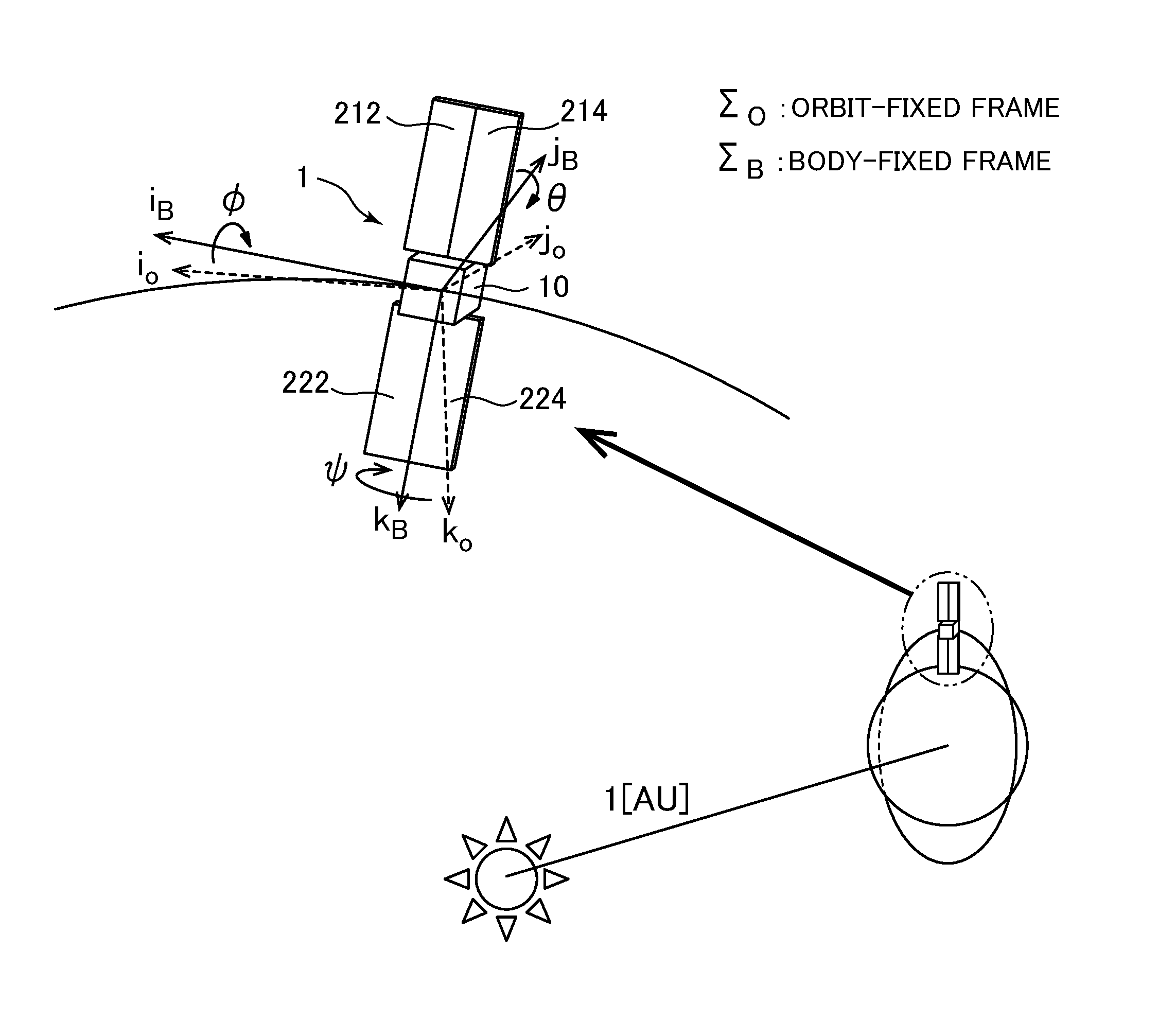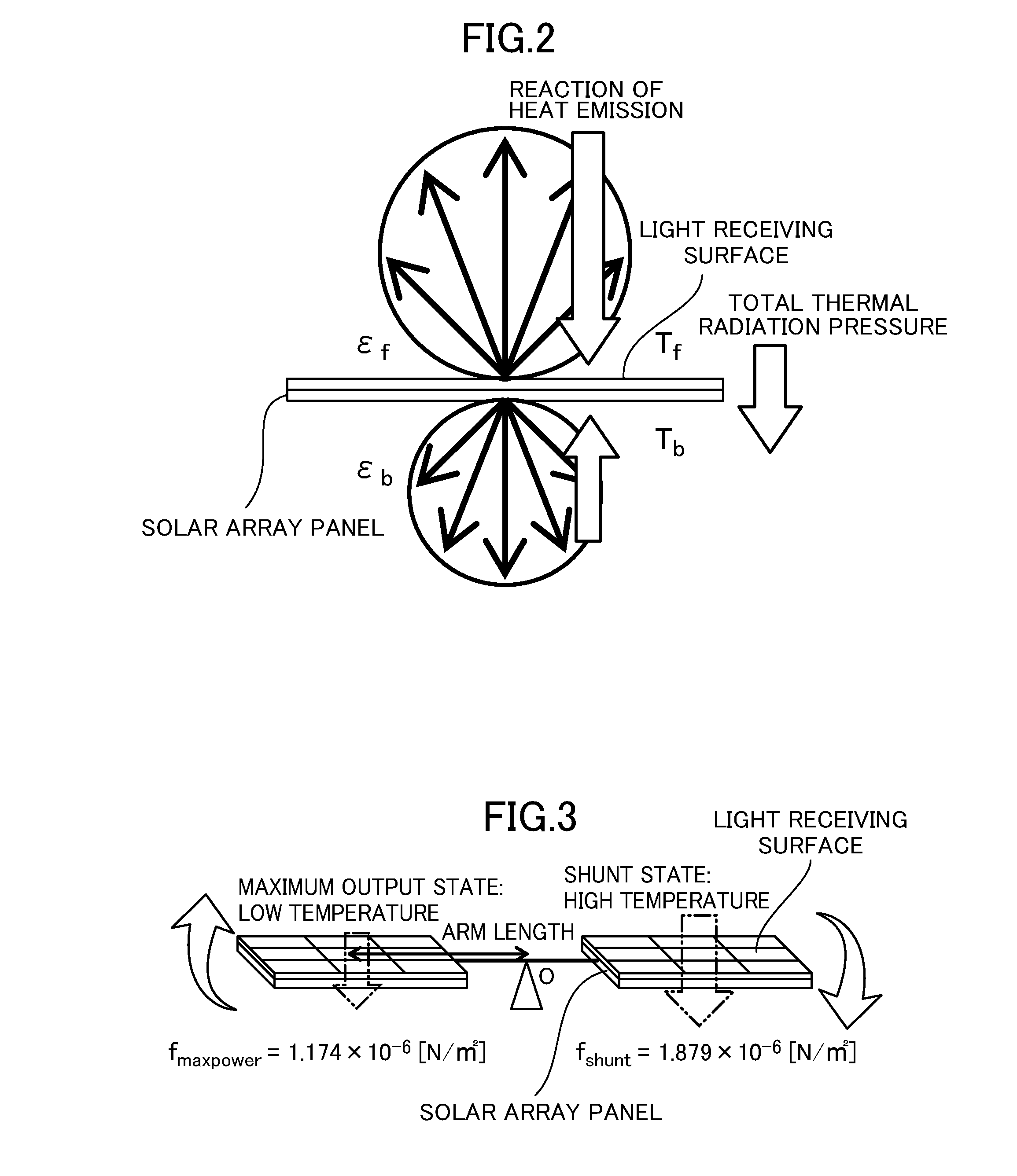Torque generation system, attitude control system for spacecraft, and relative position and velocity control system for spacecraft
a technology of attitude control system and torque generation system, which is applied in the direction of spacecraft, transportation and packaging, aircraft, etc., can solve the problems of limited amount of fuel mountable on the spacecraft, difficult to achieve the effect of existing wheels, and limited thruster operability, etc., to achieve small torque and high precision
- Summary
- Abstract
- Description
- Claims
- Application Information
AI Technical Summary
Benefits of technology
Problems solved by technology
Method used
Image
Examples
first embodiment
[0081]FIG. 4 is an external view of a satellite 1 as a spacecraft according to a first embodiment of the present invention. The satellite 1 is a 2t-class satellite, which includes a satellite body 10 and two solar array panels 21 and 22. The satellite body 10 has a cubic shape with one side being 2 m and the center of the cube being the center of mass. The solar array panels 21 and 22 have rectangular light receiving surfaces 210 and 220 with a shorter side being 3 m and a longer side being 10 m. The solar array panels 21 and 22 have the aforementioned configuration 2 with aluminum being vapor-deposited on the surface opposite to the light receiving surface. The solar array panels 21 and 22 are completely axially symmetrically arranged for coordinate axes of a later-described body-fixed frame, with respect to the center of mass of the satellite body 10. The solar array panels 21 and 22 include solar cell arrays 212, 214, 222, and 224 which are divisions of the solar array panels. Th...
second embodiment
[0117]FIG. 12 illustrates external appearance and arrangement of a first satellite 41 as a first spacecraft and a second satellite 42 as a second spacecraft according to a second embodiment of the present invention. The first satellite 41 and the second satellite 42 are solar-sailing ultra-small satellites, which include satellite bodies 410 and 420 and solar array panels 411 and 421, respectively. The satellite bodies 410 and 420 each have a cubic shape with one side being 0.1 m. The solar array panels 411 and 421 have square light receiving surfaces 4110 and 4210 with one side being 0.75 m, respectively. The satellite bodies 410 and 420 are arranged in the center of surfaces opposite to the light receiving surfaces of the solar array panels 411 and 421, respectively.
[0118]FIG. 13 illustrates the entire configuration of a system 4 for controlling a relative position and / or relative velocity of the satellite 41 as a first spacecraft and the satellite 42 as a second spacecraft accord...
PUM
 Login to View More
Login to View More Abstract
Description
Claims
Application Information
 Login to View More
Login to View More - R&D
- Intellectual Property
- Life Sciences
- Materials
- Tech Scout
- Unparalleled Data Quality
- Higher Quality Content
- 60% Fewer Hallucinations
Browse by: Latest US Patents, China's latest patents, Technical Efficacy Thesaurus, Application Domain, Technology Topic, Popular Technical Reports.
© 2025 PatSnap. All rights reserved.Legal|Privacy policy|Modern Slavery Act Transparency Statement|Sitemap|About US| Contact US: help@patsnap.com



